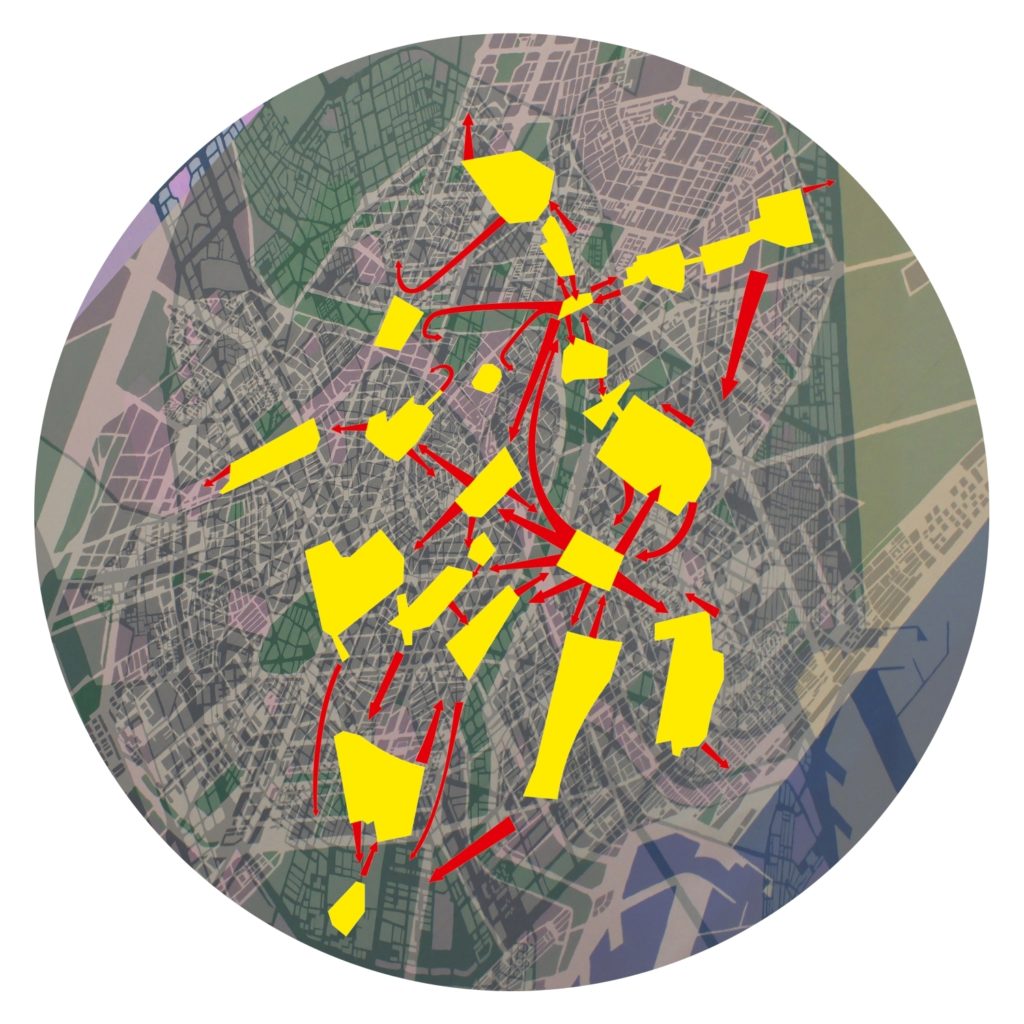As a citizen, I create the city.
The human need to understand and represent the environment is ancient. Humans map the world to understand the reality in which they live. Maps are tools that represent and translate both physical and psychic territories, helping us organize and present reality for better understanding.
Images are fundamental tools in these types of projects. They allow us to recognize spaces, and cartography allows us to tell multiple stories and subjectivities.
 No-where Valencia at IVAM. Rogelio López Cuenca
No-where Valencia at IVAM. Rogelio López Cuenca
.
We propose a photography project as an exercise: Design your own cartography and include the elements in your city that you would represent but are not shown on the official map. Design your own route and photograph what a visitor should see, what you believe deserves recognition or critique, or even aspects of your personal life that you’re willing to share.
.
Explore your city by charting routes that offer a new perspective on local history. Visualize specific spaces outside the conventional routes and embrace the roles of cartographer, photographer, artist, and citizen.
![]() No-where Valencia at IVAM. Rogelio Lopez Cuenca
No-where Valencia at IVAM. Rogelio Lopez Cuenca
.
Artist Rogelio López Cuenca has created maps of various cities, blending art with social criticism, and incorporating literary and social elements. His work provides alternative interpretations of everyday images. This artist has made maps in Mexico, Lima, Rome, and Valencia. By laying out a route through the city, he helps uncover the underlying history by revealing the diverse perspectives that coexist within the territory.
 Descampados de la ría de Bilbao (Wastelands by Bilbao River). Lara Almarcegui
Descampados de la ría de Bilbao (Wastelands by Bilbao River). Lara Almarcegui
.
Another example is Lara Almarcegui, a Spanish artist who focuses on uncovering and exploring abandoned spaces within cities. Wastelands, barren lands, and abandoned ruins. While citizens and the administration often overlook these spaces, she sees them as areas of respite and magic—free and open spaces brimming with infinite possibilities. In this way, her work both reflects and denounces urban decay.
.
.
Cartographies spark debates about culture and how citizens shape their history and collective memory through their use of the territory they inhabit. I encourage you to design urban, social, or political cartography. Explore your city, investigate spaces that interest you, and address issues or topics you want to share.
EEngaging in artistic practice as a citizen who acknowledges the space you inhabit empowers you to highlight, vindicate, or bring attention to what requires recognition or critique. Express yourself.
This post is a personal interpretation inspired by the second session of the course Understanding Art: Artistic Practice Applied to the Urban Sphere. Strategies and Projects, taught by Sandra Moros at IVAM.



